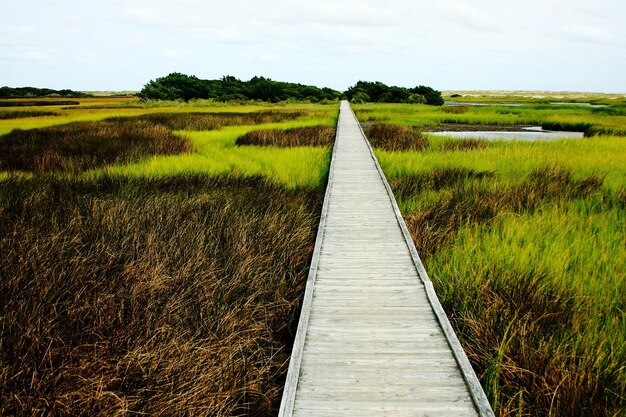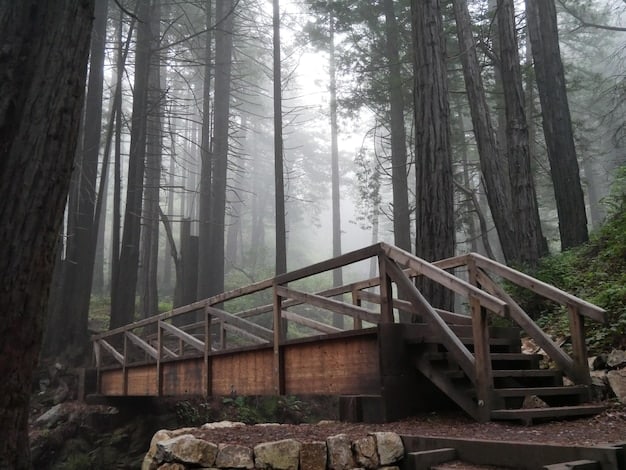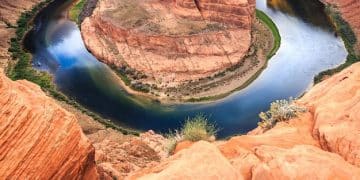Accessible US National Parks: A Guide for Travelers with Disabilities

US National Parks: A Guide to Accessible Trails and Activities for Travelers with Disabilities showcases numerous parks offering accessible trails, activities, and lodging, ensuring everyone can experience America’s natural beauty, regardless of physical limitations.
Exploring the natural wonders of the United States should be an experience accessible to all. This guide, US National Parks: A Guide to Accessible Trails and Activities for Travelers with Disabilities, highlights the incredible opportunities available for travelers with disabilities to enjoy the beauty of America’s national parks.
Planning your accessible national park adventure
Planning a trip to a US National Park requires careful consideration, especially for travelers with disabilities. Understanding the resources available and how to utilize them effectively can make the difference between a challenging trip and an unforgettable experience.
Researching Accessible Parks
Begin by researching which national parks offer the amenities and trails that meet your specific needs. The National Park Service (NPS) website is an invaluable resource, providing detailed information about accessibility features, including trail conditions, restroom availability, and accessible lodging options.
Utilizing the NPS Accessibility Guide
The NPS provides an accessibility guide for each park, outlining specific accessible features, programs, and services. These guides include details on trail grades, surface types, and the availability of assistive listening devices, tactile exhibits, and other accommodations designed to enhance your experience.
- Assess your specific needs: Consider your physical abilities, medical requirements, and any equipment you may need.
- Check for updated information: Park conditions and accessibility features can change due to construction, weather, or other factors.
- Contact the park directly: Reach out to the park’s accessibility coordinator for personalized information and assistance.
By thoroughly researching and planning ahead, you can ensure a smooth and enjoyable visit to the US National Parks. Don’t hesitate to ask questions and confirm details, as park staff are dedicated to making national parks accessible to all visitors.
Must-visit national parks for accessible trails
Many US National Parks have invested significantly in creating accessible trails that accommodate visitors with mobility challenges. These trails offer stunning scenery and opportunities for outdoor adventures for everyone.

Acadia National Park, Maine
Acadia National Park boasts a network of carriage roads that are perfect for visitors using wheelchairs or other mobility devices. These crushed stone paths are level, wide, and offer stunning views of the park’s rugged coastline and forested landscapes.
Grand Canyon National Park, Arizona
The South Rim of the Grand Canyon offers several accessible viewpoints and paved trails. The Rim Trail, in particular, provides breathtaking views of the canyon and is mostly flat and paved. Additionally, accessible shuttle buses are available to transport visitors between viewpoints.
Yellowstone National Park, Wyoming
Yellowstone National Park features numerous boardwalks and paved paths around its geothermal areas, such as Old Faithful and the Upper Geyser Basin. These accessible pathways allow visitors to experience the unique landscapes and natural wonders of Yellowstone up close.
These national parks are just a few examples of destinations that offer accessible trails and attractions. It’s important to check each park’s website for the most up-to-date information on trail conditions and accessibility features.
Accessible activities beyond hiking
US National Parks provide a variety of accessible activities beyond hiking, ensuring that visitors with disabilities can fully immerse themselves in the park experience. These activities include ranger-led programs, accessible boat tours, and adaptive sports opportunities.
Ranger-Led Programs
Many national parks offer ranger-led programs designed to be inclusive and accessible. These programs often include guided tours, talks, and demonstrations that cater to visitors with various disabilities. Check the park’s schedule for accessible program offerings and accommodations.
Accessible Boat Tours and Cruises
Several national parks offer boat tours and cruises that are accessible to visitors using wheelchairs or with other mobility challenges. These tours provide unique perspectives of the park’s waterways, landscapes, and wildlife.
Adaptive Sports and Recreation
Some parks offer adaptive sports programs and recreational activities designed for individuals with disabilities. These may include adaptive kayaking, cycling, and fishing opportunities.
- Contact the park’s accessibility coordinator: Inquire about specific accessible programs and activities.
- Request accommodations in advance: Let park staff know your specific needs and requirements.
- Participate in inclusive events: Look out for events specifically designed to be accessible to visitors of all abilities.
By participating in these accessible activities, visitors with disabilities can enhance their connection with the park’s natural and cultural resources and create lasting memories.
Navigating accessible lodging and facilities
Finding accessible lodging and facilities within US National Parks is essential for ensuring a comfortable and convenient visit for travelers with disabilities. Many parks offer a range of accessible accommodation options and amenities.

Accessible Lodging Options
Many national parks feature accessible lodging options, including hotel rooms, cabins, and campsites. These accommodations are equipped with features such as ramps, grab bars, roll-in showers, and accessible parking spaces. When booking reservations, be sure to specify your accessibility needs to ensure you are assigned an appropriate room or site.
Accessible Restrooms and Comfort Stations
Accessible restrooms and comfort stations are strategically located throughout national parks, providing visitors with convenient and accessible facilities. These restrooms are equipped with wider stalls, grab bars, and accessible sinks to accommodate visitors with mobility challenges.
Utilizing Assistive Technology
Some national parks offer assistive technology devices and services to enhance the park experience for visitors with sensory impairments. These may include assistive listening devices for ranger talks, tactile maps, and Braille brochures.
Accessible lodging and facilities play a critical role in ensuring that all visitors can enjoy and appreciate the natural and cultural heritage of US National Parks. By taking advantage of these amenities and services, travelers with disabilities can have a comfortable and enriching experience.
Tips for a smooth and enjoyable visit
To ensure a smooth and enjoyable visit to US National Parks for travelers with disabilities, it’s helpful to keep certain tips in mind. These include preparing for the weather, planning for transportation, and packing essential items.
Preparing for the Weather
Weather conditions in national parks can vary greatly depending on the location and time of year. Be sure to check the weather forecast before your visit and pack appropriate clothing, sunscreen, and rain gear. If you have any health conditions that may be affected by extreme temperatures, plan accordingly.
Transportation Considerations
Getting around national parks can sometimes be challenging, especially for visitors with mobility challenges. Many parks offer accessible shuttle services and transportation options. Be sure to inquire about the availability of these services when planning your visit.
Packing Essential Items
When packing for your national park adventure, be sure to include all essential items, such as medications, assistive devices, and personal care products. It’s also a good idea to pack snacks, water, and a first-aid kit.
By following these tips, travelers with disabilities can maximize their enjoyment of US National Parks and create lasting memories in these incredible natural landscapes.
Advocating for accessibility improvements
Advocating for accessibility improvements in US National Parks is an ongoing effort that requires collaboration between park visitors, disability advocacy groups, and the National Park Service. By voicing your concerns and suggestions, you can help make national parks more inclusive and accessible to all.
Providing Feedback to the National Park Service
The National Park Service values feedback from visitors about their experiences and suggestions for accessibility improvements. Consider sharing your thoughts with park staff, either in person or through online surveys and feedback forms.
Supporting Disability Advocacy Groups
Disability advocacy groups play a vital role in raising awareness about accessibility issues and pushing for policy changes that benefit people with disabilities. Support these organizations by volunteering your time, making donations, or participating in advocacy campaigns.
Sharing Your Experiences
Sharing your experiences visiting national parks as a traveler with a disability can inspire others and help raise awareness about accessibility issues. Consider writing blog posts, sharing photos and videos on social media, or giving presentations to community groups.
By advocating for accessibility improvements, you can help ensure that US National Parks become more welcoming and inclusive destinations for all visitors, regardless of their abilities.
| Key Point | Brief Description |
|---|---|
| ♿ Accessible Trails | Many parks offer paved or boardwalk trails suitable for wheelchairs. |
| 🏞️ Accessible Lodging | Accessible rooms and campsites are available; book in advance. |
| ♿ Ranger Programs | Inclusive ranger-led activities are available; check schedules. |
| 🚌 Transportation | Accessible shuttle services are offered in select parks. |
FAQ Section
▼
Acadia National Park, Grand Canyon National Park, and Yellowstone National Park are renowned for their accessible trails and facilities, catering to visitors with mobility challenges.
▼
Visit the official National Park Service (NPS) website and search for the specific park. Each park’s page provides detailed information on accessible lodging options and how to book them.
▼
Yes, many parks offer ranger-led programs designed to be inclusive and accessible, including guided tours, talks, and demonstrations. Check the park’s schedule for specific offerings.
▼
Yes, service animals are generally allowed in most areas of national parks. However, there may be specific regulations, so it’s best to check with the park beforehand.
▼
Some parks offer adaptive kayaking, cycling, and fishing opportunities. Contact the park’s accessibility coordinator to explore available options and any support services.
Conclusion
Visiting US National Parks is an enriching experience that should be accessible to everyone. By planning ahead, utilizing available resources, and advocating for continued improvements, travelers with disabilities can enjoy the beauty and wonder of these natural treasures.





